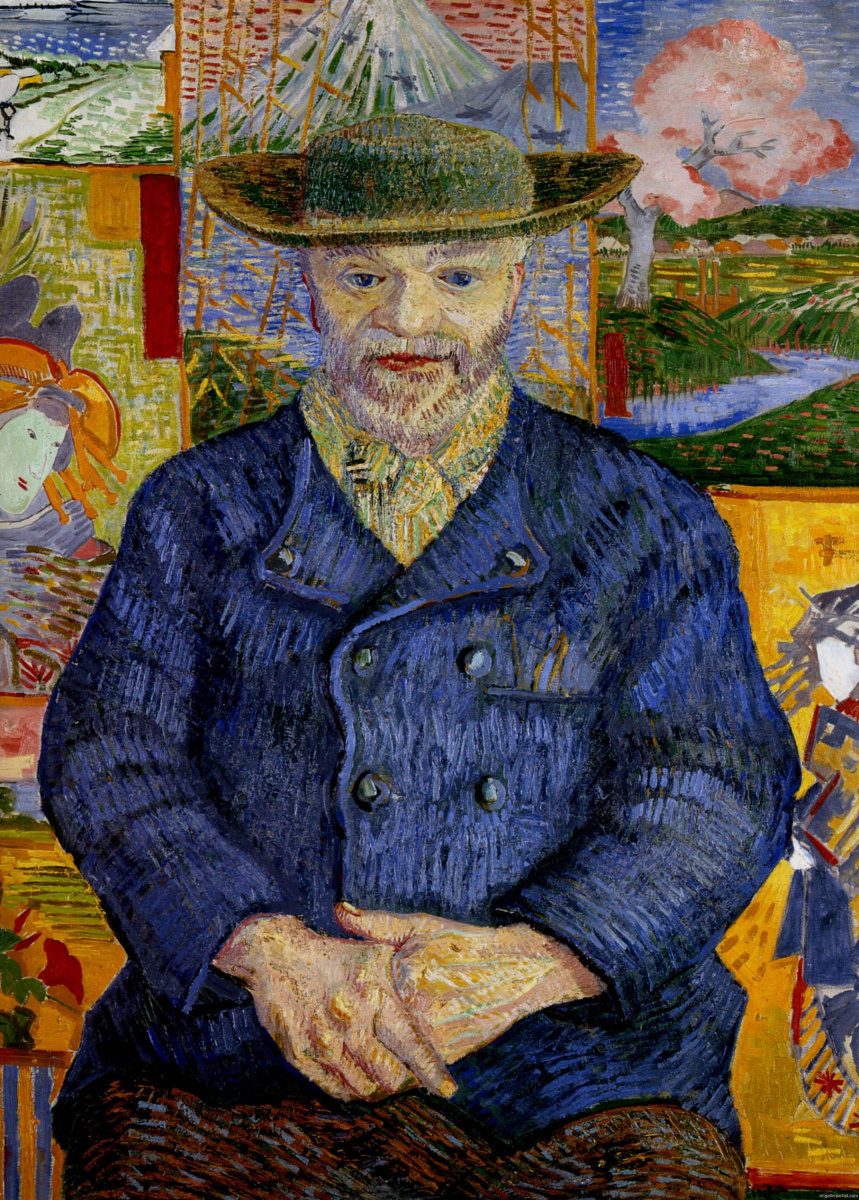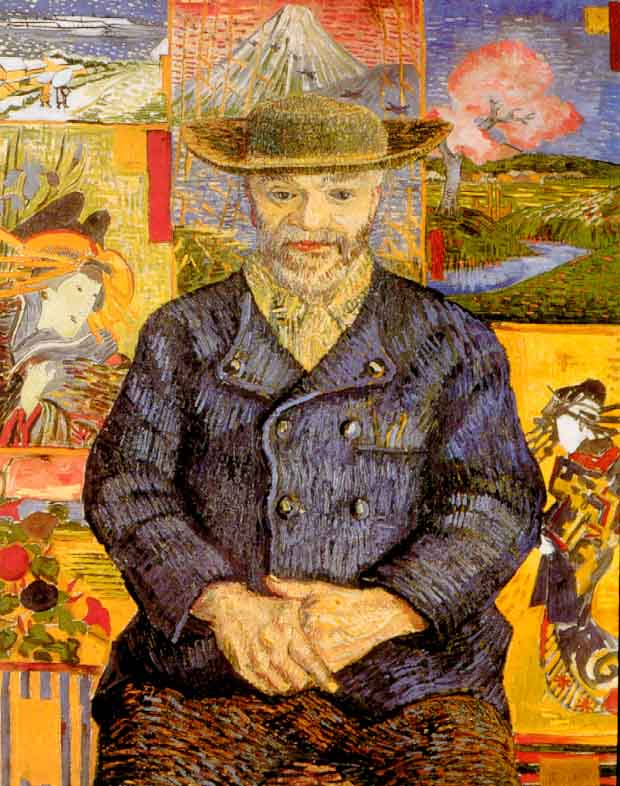log in
Enter site
Login to use Arthive functionality to the maximum
Portrait Of Père Tanguy
Vincent van Gogh • Painting, 1888, 92×75 cm
Description of the artwork «Portrait Of Père Tanguy»
In this picture the man was a very well known figure among the Parisian artists. During the life in the French capital, Vincent van Gogh painted three portrait of Père Tanguy. Second and the third (described here) the fabric is very similar in style and composition, but very different from first created to Dating Vincent with Japanese art.
Paintings of the Paris period are United by one interesting feature – they are not similar to each other. Vincent as if trying to "taste" one style, then another, from realism to impressionism, then – to pointillism. He is constantly experimenting, while maintaining a subtle awareness and personality. Sometimes van Gogh writes three paintings a day. And here we should thank the Father of Tanga (and of course, Theo, tirelessly supplied the brother's money).
Julien Tanguy had a store on the street closely, where they sold paints, brushes and paintings. Paintings, which years later were worth a fortune, got him almost for free. Very often young and poor artists Tanguy gave unlimited credit for the purchase of art supplies, and even fed them. Shop father's Tangi for a long time was the only place where you can see and buy strictly on price list (large – one hundred francs, small – forty) works Cezanne. One of the main beliefs of the Thong was: "The artist who behaves with dignity, are sure to succeed". Vincent, who at the time was addicted to absinthe and rarely behaved with dignity, success clearly is not threatened, but the Father Tanguy eccentric Dutchman liked. And van Gogh, in turn, liked anyone who showed the slightest interest in his work. He gladly gave the shopkeeper his paintings, and instead had the opportunity to take as much paint as he needed.
On the second and third portraits of Père Tanguy, Vincent was surrounded by his Oriental prints: Fuji, cherry blossoms and Kabuki actors. In this period van Gogh was just fond of Japanese painting, which influenced all his future work. The East was purchased and the face of famous shopkeeper (he is often compared with good-natured Buddha).
Author: Eugene Sidelnikov
Paintings of the Paris period are United by one interesting feature – they are not similar to each other. Vincent as if trying to "taste" one style, then another, from realism to impressionism, then – to pointillism. He is constantly experimenting, while maintaining a subtle awareness and personality. Sometimes van Gogh writes three paintings a day. And here we should thank the Father of Tanga (and of course, Theo, tirelessly supplied the brother's money).
Julien Tanguy had a store on the street closely, where they sold paints, brushes and paintings. Paintings, which years later were worth a fortune, got him almost for free. Very often young and poor artists Tanguy gave unlimited credit for the purchase of art supplies, and even fed them. Shop father's Tangi for a long time was the only place where you can see and buy strictly on price list (large – one hundred francs, small – forty) works Cezanne. One of the main beliefs of the Thong was: "The artist who behaves with dignity, are sure to succeed". Vincent, who at the time was addicted to absinthe and rarely behaved with dignity, success clearly is not threatened, but the Father Tanguy eccentric Dutchman liked. And van Gogh, in turn, liked anyone who showed the slightest interest in his work. He gladly gave the shopkeeper his paintings, and instead had the opportunity to take as much paint as he needed.
On the second and third portraits of Père Tanguy, Vincent was surrounded by his Oriental prints: Fuji, cherry blossoms and Kabuki actors. In this period van Gogh was just fond of Japanese painting, which influenced all his future work. The East was purchased and the face of famous shopkeeper (he is often compared with good-natured Buddha).
Author: Eugene Sidelnikov



